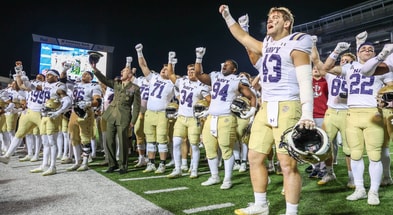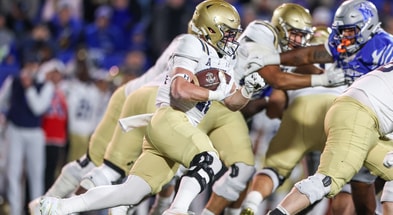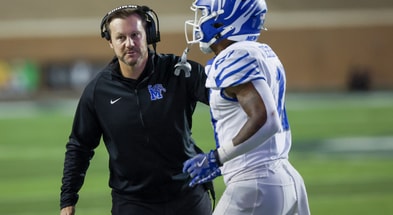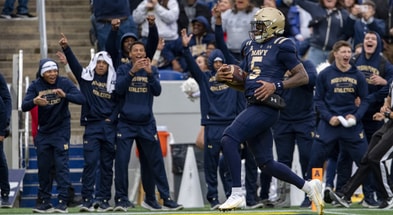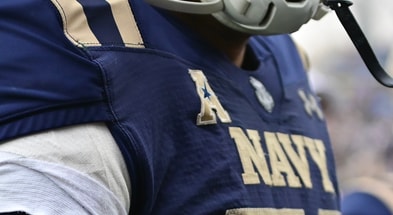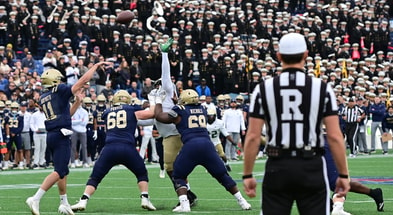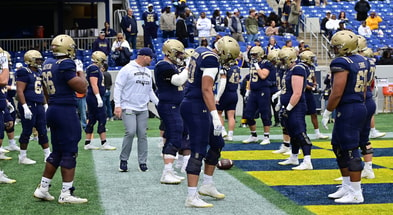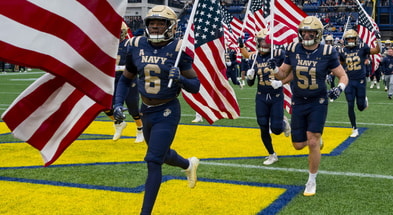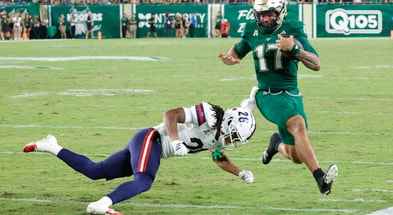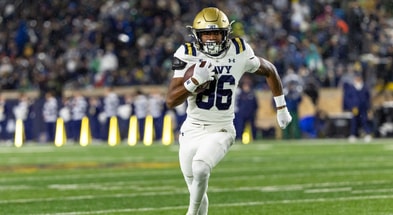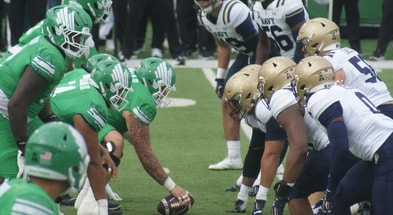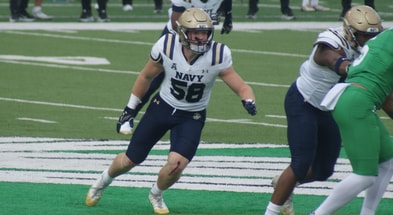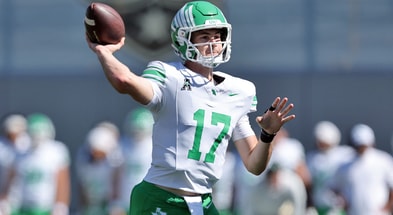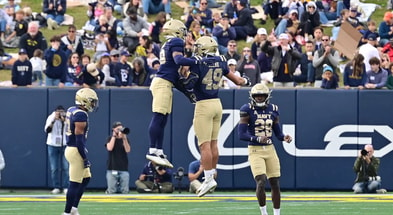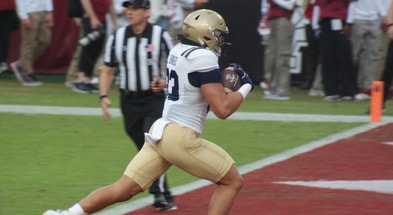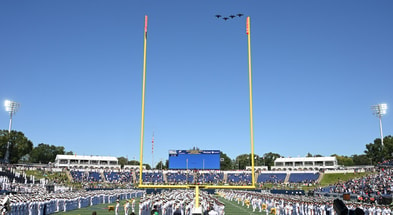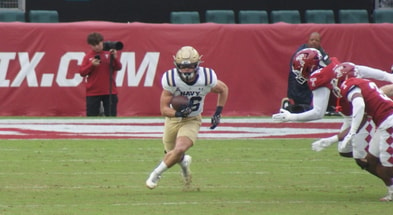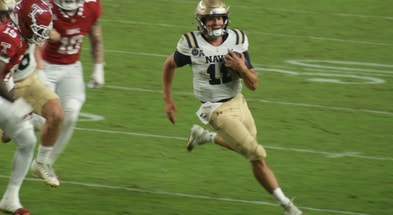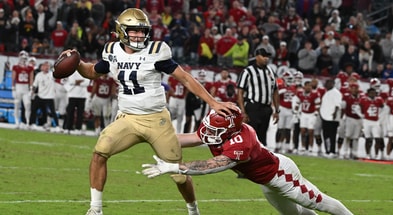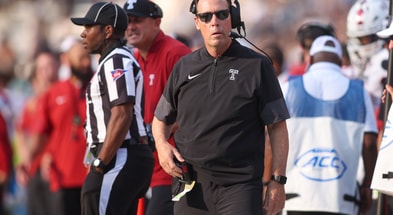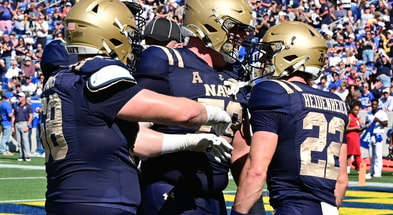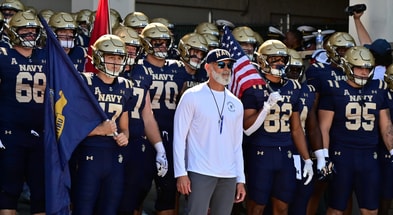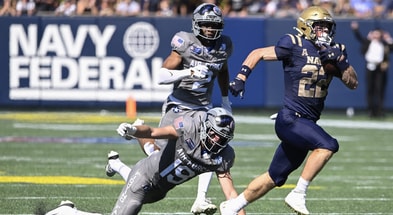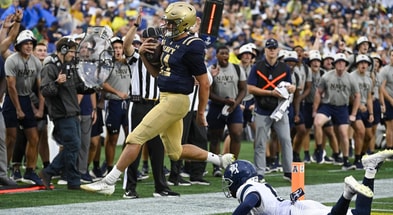The FAU Preview
College football has long been divided between haves and have-nots, but the definition of those categories has evolved. In recent years, the line between the two was based on conference membership, and in many ways, that’s still true. But the introduction of NIL and the transfer portal has added a new variable to that formula. Now, the true measure of “have” and “have not” is the ability to pay for top talent in the portal every year.
Interestingly, this has also created divisions within individual conferences. In the American, Memphis, USF, and Tulane are the kings of NIL. League schools without the same resources have to find other ways to make themselves competitive. As Paul Johnson used to say, if you can’t be better, you’d better be different. One way teams are doing “different” is through unconventional coaching hires.
That’s the path FAU took when they named Zach Kittley as their head coach back in December. In one sense, it doesn’t seem all that unconventional. Kittley has been a successful offensive coordinator for a few years now, first at FCS Houston Christian, then at Western Kentucky, and then at his alma mater, Texas Tech. Power conference coordinators are usually a top choice for schools looking for a new head coach, so that all seems normal enough. But what’s unusual about Kittley is how quickly it happened.
At 34, Kittley is the youngest head coach in FBS. He never played college football, originally attending Abilene Christian on a basketball scholarship. He later transferred to Texas Tech and became a student assistant for the football team. That led to three years as a GA, where he worked with the quarterbacks (including Patrick Mahomes) under head coach Kliff Kingsbury. Even though he was only a GA, that pedigree was enough for Houston Christian– still known as Houston Baptist at the time– to bring him on as a coordinator.
But while pedigree helped get his foot in the door, it’s the results that have kept Kittley moving up the ladder. Everywhere he’s gone, Kittley has made an immediate impact. In his first season at HCU, Kittley doubled the team’s scoring from the previous year, from 150 to 301 points. In his one season at WKU, the Hilltoppers led the country in passing offense and ranked second in scoring offense, all after averaging only 290 total yards and 18 points per game the previous year.
You can probably see what FAU was going for. There is a long line of Air Raid coaches who were hired for prominent coordinator or head coaching roles at a young age, from Lincoln Riley to Kingsbury to Neal Brown. Eric Morris, Jake Spavital, Graham Harrell… There are plenty more, too. At some point, football decided that the Air Raid was the Offense of the Future™ and that anyone fluent in its language was worth betting on. With this One Weird Trick, you can jumpstart your football program! By hiring Kittley, FAU was hoping to grab a future coaching star on the ground floor.
And maybe they have. The early signs are certainly positive. FAU is a modest 3-4, but that already matches their win total from a year ago. The program only has six winning seasons in its 22-year history, so being in bowl contention through seven games has to be considered a step forward. FAU will come to Annapolis with a lot to play for. A win over the Mids would put the Owls at .500 with two-thirds of the schedule behind them and already having faced Memphis and USF. Optimism over the rest of the season seems perfectly reasonable.
So what is the Air Raid anyway, and why is it in such demand? In a way, the term has lost its original meaning. Calling a team an “Air Raid” team is sort of like calling others an “option” team. The service academies and Rice all have the “option” label applied to them, but they all run different offenses. Air Raid teams are the same way. Each of the coaches I mentioned has their own flavor of offense based on Hal Mumme‘s original formula.
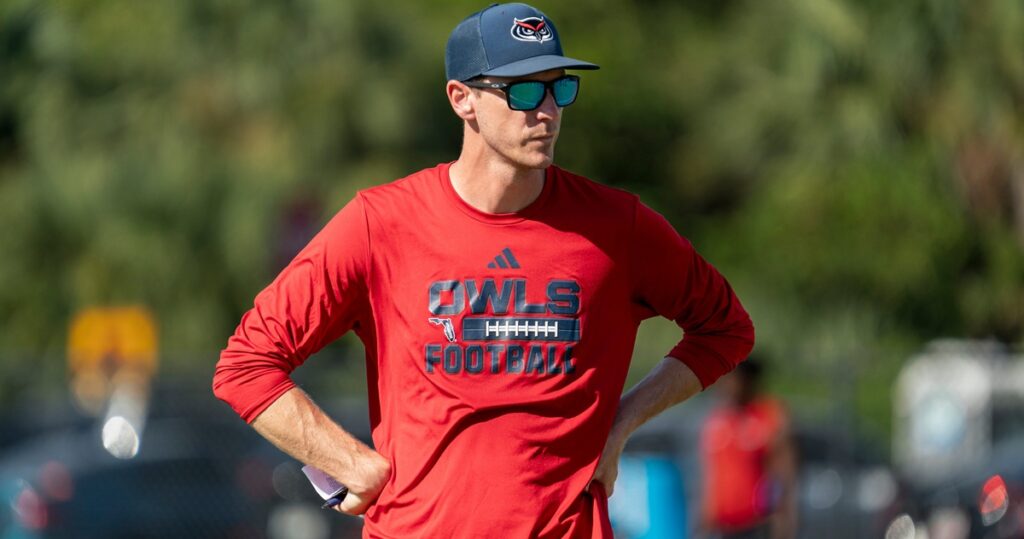
At its core, the Air Raid is actually a minimalist system. It’s built on spacing, timing, and repetition, with a few core plays and simple rules so the QB and receivers read the defense the same way. The Xs and Os are obviously different, but there are some philosophical similarities with option offenses. The goal is to simplify defenses, give the quarterback one or two keys to read, and deliver the ball based on those keys. The run game is simple, designed to do just enough to force defenses to keep defenders in the box. When the box gets light, the offense will run inside zone, traps, and the occasional counter trey.
And it works. The Owls will line up on Saturday with the #4 passing offense in the country, averaging 317.4 yards per game. Quarterback Caden Veltkamp leads the nation in completions per game (30.8) while junior wide receiver Easton Messer is the leader in receptions per game (8.6). Fellow wide receiver Jayshon Platt averages 114.7 all-purpose yards per game. Through seven games, Veltcamp has as many 300-yard passing games (3) as FAU had in the last two seasons combined.
Things got off to a rocky start, though. One thing we’ve often talked about here is how it can be hard for transfer-heavy teams to gel early in the season. That’s especially true for a team running an offense that requires enough reps to internalize timing and reads to run effectively. FAU has thrown 12 interceptions this season, but nine of them came in FAU’s first two FBS games of the season. Since then, the Owls have an 8:3 TD to INT ratio, and they’ve won two of their last three games. The more experience everyone has gained in the offense, the better they’ve become.
When FAU is playing its best, a few things stand out. While all Air Raid offenses are fast-paced by design, Kittley’s version emphasizes tempo at a whole different level. At 21.1 seconds per play, Florida Atlantic is the fastest-paced team in the country. The fast pace forces defenses to simplify, since complex calls and on-field adjustments after the call are difficult to execute.
But maintaining that pace would be almost impossible if you’re constantly throwing downfield. Instead, FAU throws 65% of their passes less than ten yards, with nearly a quarter of them (24%) being behind the line of scrimmage. Messer is the team’s leading receiver with 60 catches, but 22 have been behind the LOS. While FAU is one of the country’s most prolific passing offenses, they are only 96th in the country in yards per attempt, at 6.7.
That brings up a key for the Navy defense this week: limiting the big play. I know, you could say that every week against any team, but it’s especially true against FAU. The threat of the explosive play is what makes FAU’s short-range passes and running so effective. When you take away that threat, the Owls tend to sputter, and it’s most evident in the red zone, where the field shrinks. Navy is #1 in the country in red zone touchdown percentage at 84%. FAU is 115th at 50%. Combine that with the Navy defense only allowing red zone touchdowns 52% of the time (20th in the country), and you get a favorable strength vs. weakness matchup for the Mids if you force FAU to drive the field.
But limiting the big play is easier said than done. In their recent wins over Rice and UAB, FAU threw seven touchdown passes. Six of them were from 29 yards out or further. The best solution to struggling in the red zone is not to bother with the red zone in the first place.
That’s a big reason why they fared poorly against USF, falling to the Bulls, 48-13. Last week, the Owls didn’t have a single pass completed for more than 20 yards. Not coincidentally, they were at -13 rushing yards through three quarters and only finished with 23. USF was able to stop the FAU run game at the line of scrimmage without needing any extra defenders in the box. That made it harder for FAU to throw deep, and without that threat, the offense struggled.
Can Navy do the same thing? We’ve seen the defensive line take over games before, notably against Rice. But while it’s possible, I don’t think that’s something you can plan on.
So what else can Navy do? Air Raid offenses are all about getting the quarterback into a rhythm, so playing defense against them is about disrupting that rhythm. That means mixing up zone coverages from play to play to force the quarterback to make a new read on every snap. Simulated pressure can be part of that. In man coverage, you want your DBs to jam receivers at the line of scrimmage to re-route them and throw off their timing. But mixing up defenses from play to play can be difficult with FAU’s tempo, and against Temple, we saw the Navy defense having difficulty getting its plays called quickly. If the Mids have a repeat of those problems, it’ll make for a long afternoon.
One thing Navy probably shouldn’t consider is blitzing too often. Veltkamp’s numbers actually improve slightly against blitzes, from 66.2% completions and 6.3 yards per attempt when not blitzed, to 67% and 7.5 yards per attempt when blitzed. This makes sense if you think about it. The ball gets out of his hands so quickly that pass rushers are unlikely to get to him first. Blitzing leaves fewer defenders in coverage.
It all makes for a tough matchup for a Navy team that looked out of sync in pass defense their last time out. The bye week couldn’t have come at a better time. The Mids have looked good in pass defense at times this year, particularly against Tulsa and in the second half against UAB. Hopefully, the bye week gave them a chance to regroup and get back on track.
On the other side of the ball, FAU’s defense isn’t very good statistically, although that can give a false impression of their actual ability. Defensive stats are rarely kind to Air Raid teams, and they often don’t look good for up-tempo teams, too. Put the two together, and it can look like a mess. FAU is 128th in the country in scoring defense (35.4 ppg) and 100th in total defense (396.7 ypg). They’re 123rd in defensive points per drive (3.06).
Don’t tell any of this to Drew Cronic, though. On his weekly Zoom call, Navy’s offensive coordinator said FAU’s defense looks as athletic as any they’ve faced this year. After watching them myself, I agree. They have guys who can run, as evidenced by their three players with more than 40 tackles: safety Dillon Williams, and linebackers Tyler Stolsky and Leon Hart Jr. And their best performance of the year might have come against the offense most similar to Navy’s on their schedule: Rice.
FAU defeated Rice, 27-21, in a game where the latter Owls had trouble putting drives together. After scoring on their opening possession, Rice’s next five drives ended in a turnover on downs, a missed field goal, and three punts. While they scored two touchdowns in the second half, they only had three possessions. Once FAU got a 10-point lead in the third quarter, they were content to dial back the aggression and force Rice to eat up time.
Rice’s offense is not Navy’s, but it’s the closest reference point we have. FAU’s defense didn’t utilize any unusual stunts or gimmicks that you sometimes see against option offenses. Instead, they lined up in a 3-4 and relied on their players’ athletic ability to carry the day.
They did this in two main ways. The first was that they would often have an inside linebacker attempt to time the snap count and shoot a gap:
They did get burned once on this; here, you see Rice running off tackle to avoid the linebacker, which left nobody at the second level to stop the ball carrier:
But this isn’t something FAU did on every play. They mixed it in here and there as a way to get Rice off schedule. Rice couldn’t adjust for this, because they couldn’t predict when it was going to happen.
The other thing that stood out about FAU’s defense was that their safeties were very aggressive on the perimeter.
And again, they did get burned for this once. Here, you can see the safety’s eyes in the backfield while the slotback (or Rice equivalent) runs past him on the wheel route.
But again, Rice never really adjusted for this.
So what does this mean for Saturday? I’m not sure. I do think we’ll see aggressive linebacker play at times, particularly on first and second down. But Navy is a very different offense from Rice when it comes to throwing downfield. Specifically, Navy does it, and Rice does not. I can’t imagine that FAU will want to be as aggressive in the secondary against the Mids, but if they are, it could be another big day for Horvath’s arm.
Along those lines, something else I noticed was that FAU was almost exclusively in man coverage. When a Rice player would go in motion, the safeties would hand off responsibility to each other based on where the motion man was going. If they do the same thing against Navy, we could see twirl motion or similar plays meant to confuse the safeties and have them running to opposite sides of the field while Cody Howard takes off up the middle. Anything that leaves Eli Heidenreich in single coverage is also most welcome.
Navy’s had two bye weeks now; two chances to catch their breath. But now we’re in the home stretch. This is the part of the season everyone has been waiting for. FAU may not be in the running for the conference title, but they are built to test the things that have given Navy trouble. This is the first game of the rest of the season, and if Navy wants to make the jump from good to great, the time to start is Saturday.
